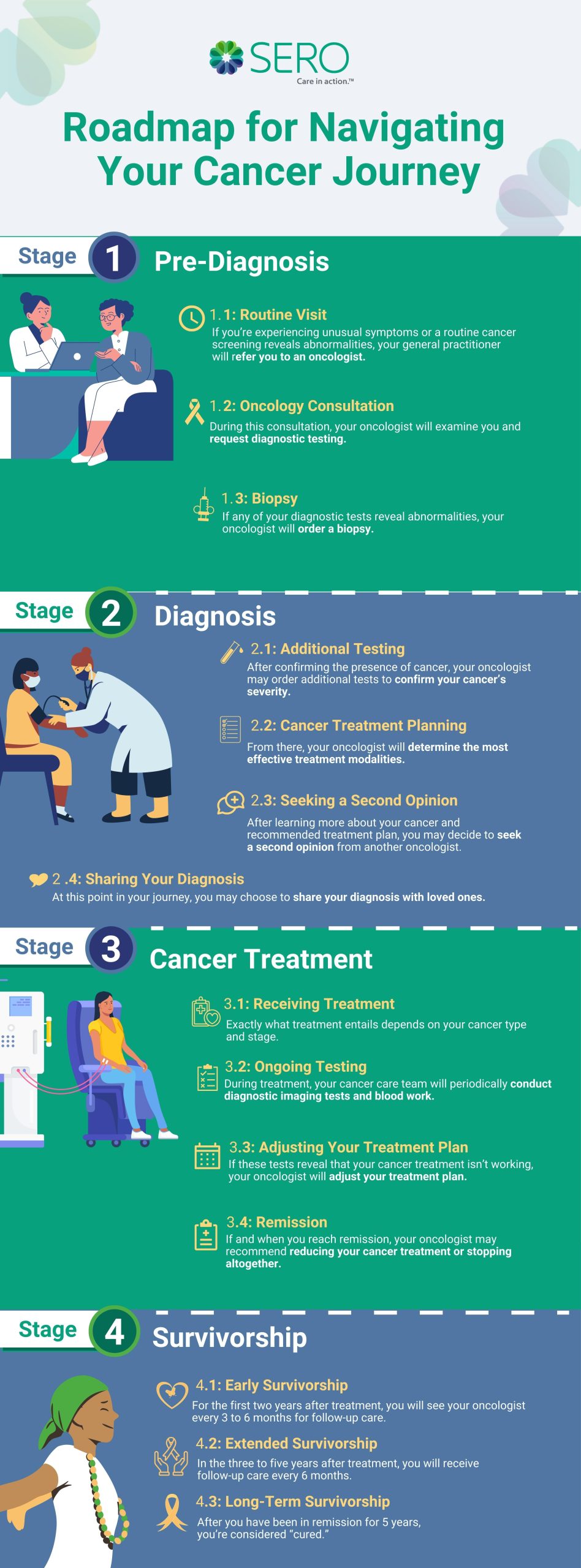One of the hardest parts of cancer is uncertainty. Not knowing what your future holds can make you feel angry, scared, and even guilty.
To ease some of your stress, the radiation oncologists at SERO have outlined the stages that many patients encounter on their cancer journey.



